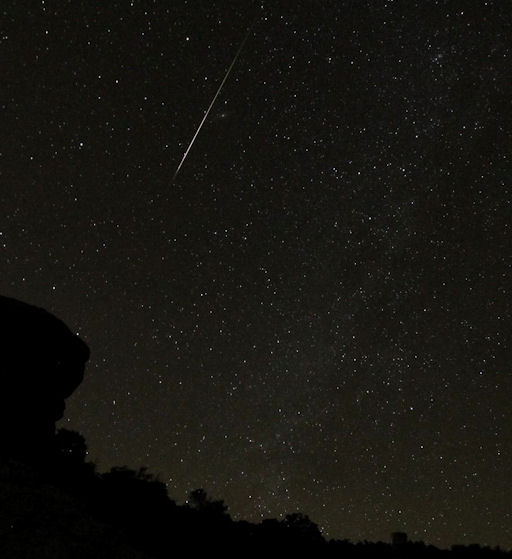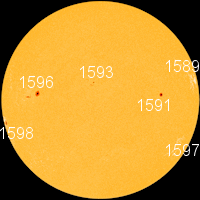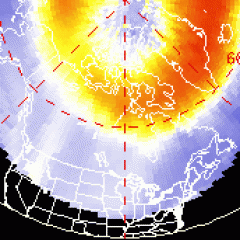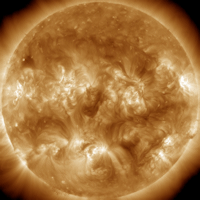ALMOST-X FLARE: On Oct. 20th at 1814 UT, Earth-orbiting satellites detected a strong M9-class solar flare. The source was a new sunspot, AR1598, emerging over the sun's southeastern limb. NASA's Solar Dynamics Observatory recorded the extreme ultraviolet flash (image), which sent waves of ionization rippling through Earth's upper atmosphere. More flares are in the offing. NOAA forecasters estimate a 40% chance of M-flares and a 10% chance of X-flares during the next 24 hours. Solar flare alerts: text, voice.
ORIONID METEOR UPDATE: The Orionid meteor shower is underway as Earth passes through a stream of debris from Halley's Comet. International meteor counts suggest a broad peak of about 25 meteors per hour centered on Oct. 21st. If the trend holds, sky watchers can expect to see a dozen or so Orionids flitting across the sky every hour after midnight on Oct. 21-22. Got clouds? Try listening for Orionid 'pings' on the realtime meteor radar.
Last night, Oct. 21st, Bill Vaughn photographed this piece of Halley's Comet burning up over Mt. Lemmon, north of Tucson, Arizona:

![]()
Solar wind
speed: 356.7 km/sec
density: 2.2 protons/cm3
explanation | more data
Updated: Today at 1917 UT
![]()
X-ray Solar Flares
6-hr max: C1 1316 UT Oct21
24-hr: C7 0308 UT Oct21
explanation | more data
Updated: Today at: 1859 UT
![]()
![]()
![]()
Daily Sun: 21 Oct 12
![]()
![]()
New sunspot 1598 poses a threat for M- and X-class solar flares. Credit: SDO/HMI
![]()
![]()
![]()
Sunspot number: 112
What is the sunspot number?
Updated 21 Oct 2012
Spotless Days
Current Stretch: 0 days
2012 total: 0 days (0%)
2011 total: 2 days (<1%)
2010 total: 51 days (14%)
2009 total: 260 days (71%)
Since 2004: 821 days
Typical Solar Min: 486 days
Update 21 Oct 2012
The Radio Sun
10.7 cm flux: 151 sfu
explanation | more data
Updated 21 Oct 2012
![]()
![]()
![]()
Current Auroral Oval:
![]()
Switch to: Europe, USA, New Zealand, Antarctica
Credit: NOAA/POES
![]()
![]()
![]()
Planetary K-index
Now: Kp= 1 quiet
24-hr max: Kp= 1 quiet
explanation | more data
![]()
Interplanetary Mag. Field
Btotal: 4.3 nT
Bz: 0.0 nT
explanation | more data
Updated: Today at 1916 UT
![]()
![]()
![]()
Coronal Holes: 21 Oct 12
![]()
![]()
There are no large coronal holes on the Earthside of the sun. Credit: SDO/AIA.





